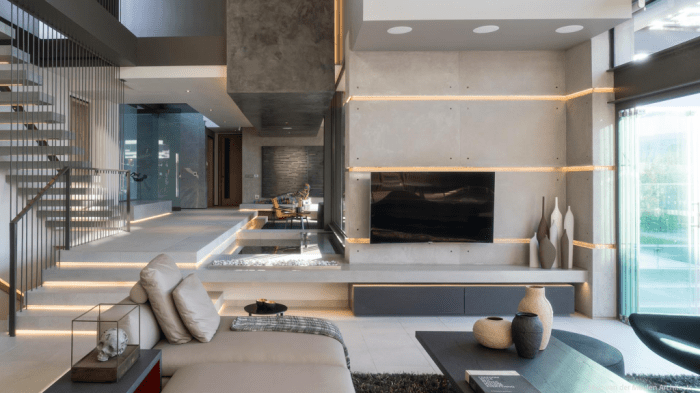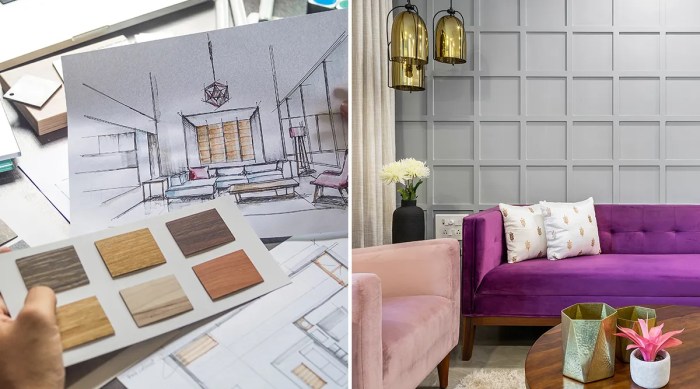Delving into the world of architecture and interior design, we uncover the intricate dance between architects and interior designers. Their collaboration is not just a partnership but a fusion of creativity and functionality that shapes the spaces we inhabit.
As we unravel the distinct yet interwoven roles of these professionals, a deeper understanding emerges of how they bring visions to life through their unique expertise.
Role of an Architect and Interior Designer
An architect is responsible for designing and planning the overall structure of a building, focusing on functionality, safety, and aesthetic appeal. On the other hand, an interior designer focuses on creating interior spaces that are aesthetically pleasing, functional, and reflective of the client's needs and preferences.
Collaboration in Projects
Architects and interior designers often collaborate on projects to ensure a cohesive and well-integrated design. For example, in a residential project, an architect may design the layout and exterior of the house, while the interior designer works on selecting furniture, finishes, and decor that complement the architectural design.
Differences and Complementarity
- Architects focus on the overall structure, building systems, and exterior design, while interior designers concentrate on interior spaces, furnishings, and decorations.
- Architects consider building codes, regulations, and structural integrity, while interior designers prioritize aesthetics, functionality, and client preferences.
- Both professionals work together to create a harmonious design that balances the architectural elements with the interior spaces, ensuring a seamless and well-executed final result.
Skills and Qualifications
When it comes to the fields of architecture and interior design, there are certain skills and qualifications that are essential for professionals in these roles. Let's take a closer look at what is required for architects and interior designers.
Essential Skills
- Strong design sense and creativity
- Excellent drawing and drafting skills
- Knowledge of building codes and regulations
- Strong communication and interpersonal skills
- Attention to detail and problem-solving abilities
- Ability to work in a team and collaborate with clients
- Project management skills
- Technical proficiency in design software and tools
Educational Qualifications
Architects typically need to have a professional degree in architecture, which is usually a Bachelor's or Master's degree from an accredited program. They are also required to complete a certain number of intern hours and pass the Architect Registration Examination.
Interior designers, on the other hand, may have a degree in interior design or a related field. While formal education is important, some designers may also gain experience through apprenticeships or on-the-job training.
Creativity in Architecture and Interior Design
Creativity is a key component in both architecture and interior design. Architects need to come up with innovative and functional designs that meet the needs of their clients while also considering factors like sustainability and building codes. Interior designers, on the other hand, are responsible for creating aesthetically pleasing and functional spaces that reflect the client's style and preferences.
Both architects and interior designers must think outside the box, envisioning spaces in new and unique ways to create designs that are both practical and visually appealing.
Design Process

Design process is a crucial aspect of the work done by architects and interior designers. It involves a series of steps that guide the creation of functional and aesthetically pleasing spaces for clients.
Initial Client Consultation
During the initial phase, architects and interior designers meet with clients to understand their needs, preferences, budget, and timeline. This step is crucial as it sets the foundation for the entire design process.
- Discuss project requirements and goals
- Review any existing architectural plans or interior layouts
- Establish a clear understanding of the client's vision
Conceptualization and Visualization
Once the client requirements are gathered, architects and interior designers begin to conceptualize and visualize potential designs. This step involves creating sketches, mood boards, and 3D models to help clients better understand the proposed designs.
Visualization tools such as CAD software and virtual reality play a key role in bringing designs to life.
Design Development
After the initial concepts are approved, architects and interior designers move on to the design development phase. This involves creating detailed drawings, selecting materials, and finalizing the overall design scheme.
- Develop floor plans and elevations
- Select furniture, fixtures, and finishes
- Coordinate with contractors and suppliers
Construction and Implementation
Once the design is finalized, architects and interior designers oversee the construction and implementation phase. They work closely with contractors to ensure that the design is executed according to the plans and specifications.
- Regular site visits to monitor progress
- Address any issues or changes that may arise during construction
- Ensure the final result meets the client's expectations
Building Codes and Regulations

Architects and interior designers play a crucial role in ensuring that projects comply with building codes and regulations to guarantee the safety and well-being of occupants.
Common Regulations to Consider
- Accessibility requirements for individuals with disabilities, such as ramps and wide doorways.
- Fire safety regulations, including the installation of smoke detectors and fire exits.
- Zoning laws dictating land use and building height restrictions in a specific area.
- Structural requirements to withstand natural disasters like earthquakes or hurricanes.
Collaboration for Legal Compliance
Architects and interior designers work closely together to ensure that designs meet legal requirements and safety standards. Architects focus on the overall structure and building systems, while interior designers pay attention to the aesthetics and functionality of interior spaces.
Wrap-Up
In conclusion, the symbiotic relationship between architects and interior designers is a testament to the power of collaborative design. Together, they create spaces that not only please the eye but also enhance our daily lives, leaving a lasting impact on the way we experience the world around us.
Q&A
What are the main responsibilities of an architect and an interior designer?
Architects focus on the overall structure and functionality of a building, while interior designers concentrate on the aesthetics and functionality of interior spaces.
What essential skills are required for architects and interior designers?
Essential skills for architects include technical knowledge, creativity, and problem-solving abilities, while interior designers need skills in space planning, color theory, and project management.
How do architects and interior designers collaborate in design projects?
Architects and interior designers collaborate by sharing ideas, coordinating designs, and ensuring that the overall vision of the project is cohesive and functional.










